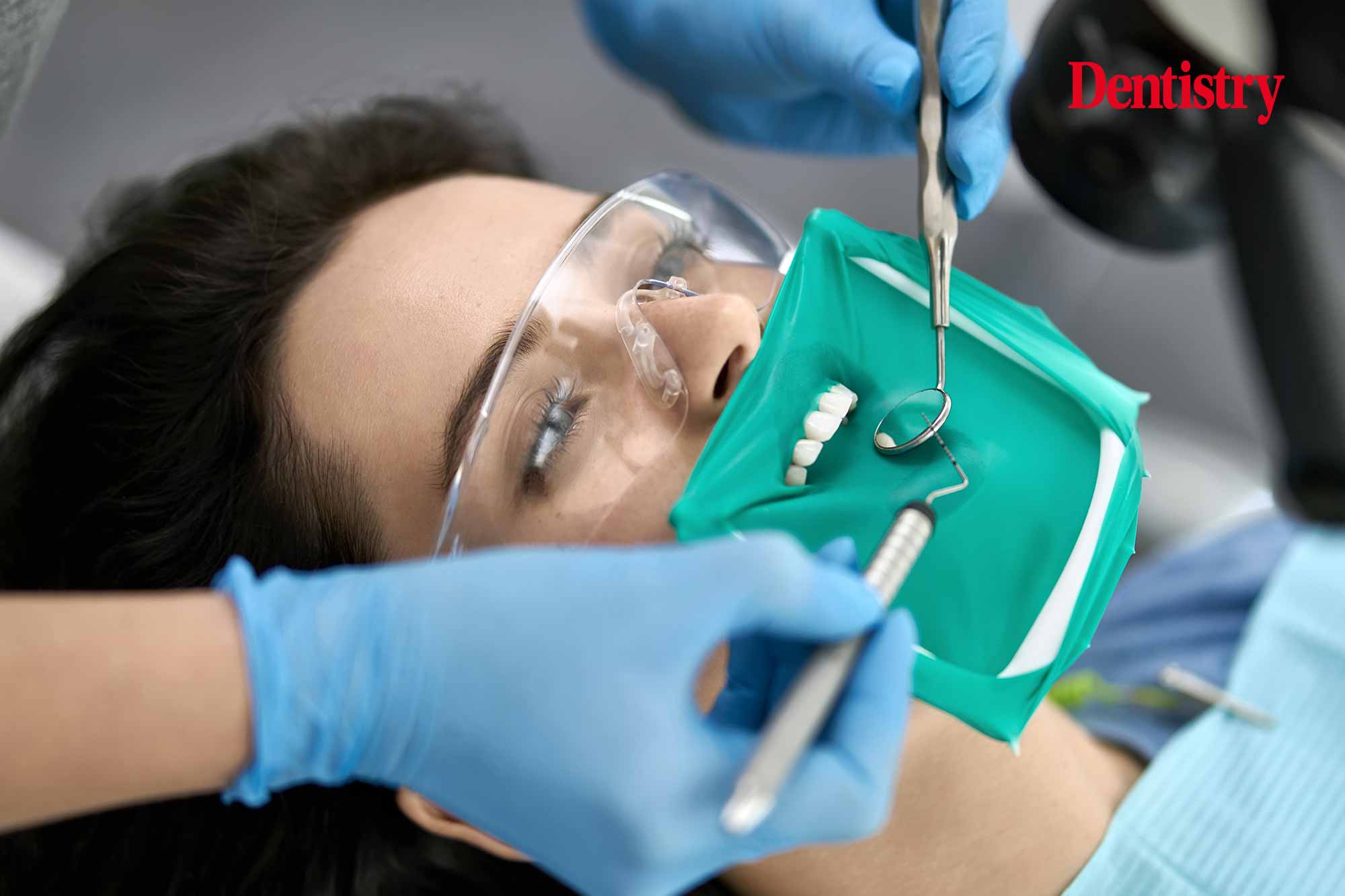 Shivani Patel examines a case that demonstrates why using rubber dam is always in the best interests of the patient – and the practitioner.
Shivani Patel examines a case that demonstrates why using rubber dam is always in the best interests of the patient – and the practitioner.
Issues around rubber dam are a recurrent problem. They happen regularly and are normally entirely avoidable.
A patient attended for a root canal treatment on a lower right second molar. The patient had previously lost a filling in the tooth but delayed visiting the dentist. The tooth became painful and subsequently tender.
The dentist established that the tooth was non-vital and a radiograph revealed some distal root periapical pathology. Treatment options were offered and the patient chose a root canal. The clinician carried out the non-AGP treatment using level two PPE COVID precautions.
Local anaesthetic was administered and the dentist set to work. His statement outlined his usual practice of using a rubber dam. But, ‘to his regret’, he chose not to do so, apparently to make the procedure ‘more comfortable’ for the patient.
A few minutes into the procedure, he dropped a file, which fell on to the patient’s tongue and disappeared down the throat. At the time of the incident, the nurse had left the consulting room to obtain some further instruments.
The dentist stopped the procedure, and the practice manager drove the patient to the local hospital, accompanied by the dentist. The hospital was very busy and the patient waited several hours for an X-ray, which showed the file lodged in the stomach.
The patient was medically assessed and underwent urgent gastroscopy later that night but, unfortunately, the file could not be located. The patient was retained in the hospital for several days. He subsequently passed the file with a small amount of bleeding.
Indefensible decisions
The dentist chose not to use a rubber dam because he thought it might cause the patient discomfort.
Such a decision is indefensible. It exposes the patient to exactly the risk that came about. Everyone knows how easy it is to drop a small file or reamer, especially at the back of the mouth.
The patient and his family are proactively engaging in discussions about the accident. A full apology has been provided and discussions are occurring about appropriate compensation.
It cannot be said too often that no root treatment should be undertaken without the use of a rubber dam. Not only is it crucial for protecting the patient, but it ensures a dry field, minimises the risk of consequences from accidents, and there is evidence that outcomes are better.
In this case, the clinician didn’t even consult the patient about rubber dam. But if a patient refuses to allow it, the dentist should decline to offer the treatment. The dentist should carefully explain the reasoning behind the need for a rubber dam.
If the patient remains unhappy, the dentist should discuss remaining options, together with attendant risks and benefits. These may be a choice of either no treatment or extraction.
Dentists should also explore referral options, such as for treatment under sedation. They should be open and transparent regarding the availability of local NHS and private referral options.
Key principles
With all root canal treatment work, it is important to ensure clinicians follow all the principles. Always take a preoperative radiograph. Explain that RCT is a last resort – if it fails, they will lose the tooth. Describe all the risks, and if the patient decides to leave the tooth untreated, also fully explain the possible risks and consequences of doing so.
Remember GDC Standard 7.2.2: ‘Only deliver treatment if you are confident, have had necessary training and are competent to do so.’ If you are unable to successfully navigate all the canals, explain all the options to the patient and make any necessary arrangements.
And finally, always use a rubber dam – and write everything down!
For more information on Densura, visit www.densura.com.


